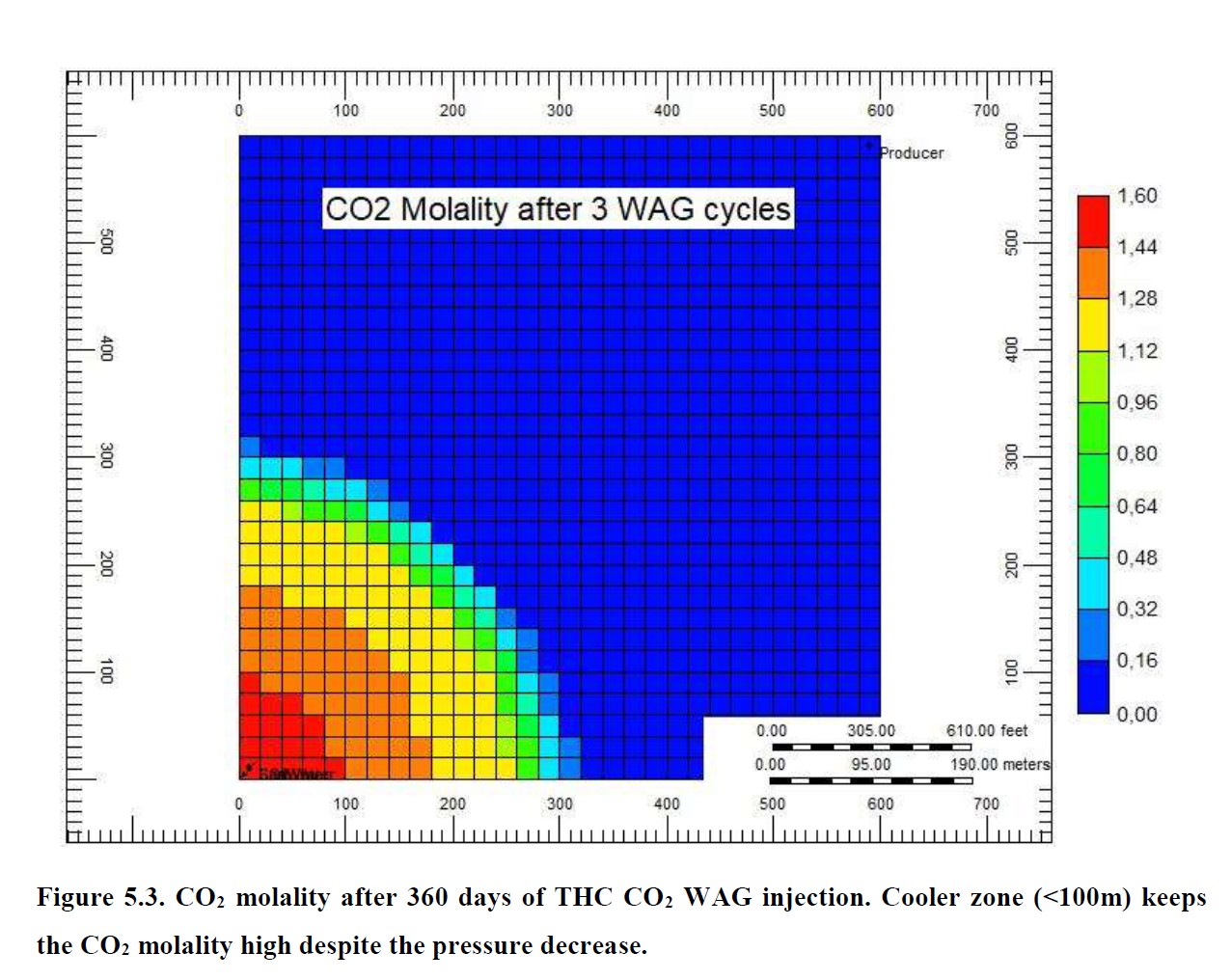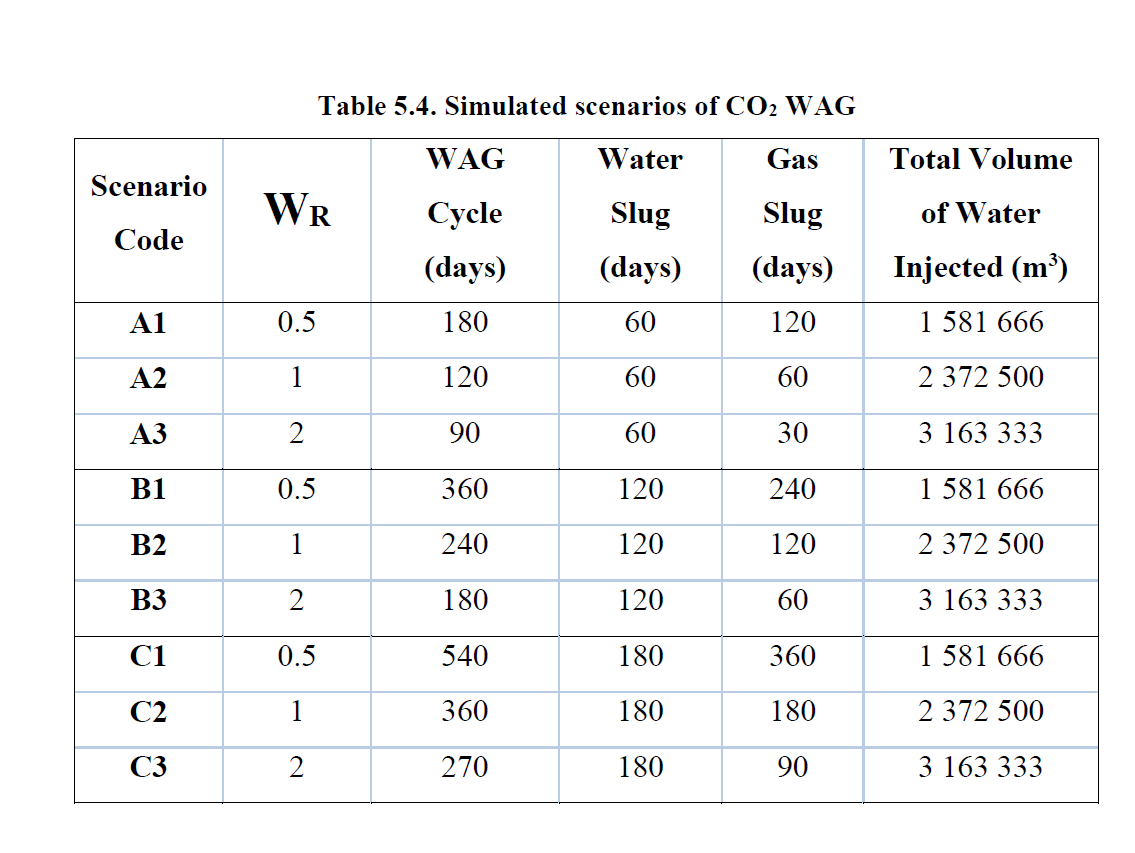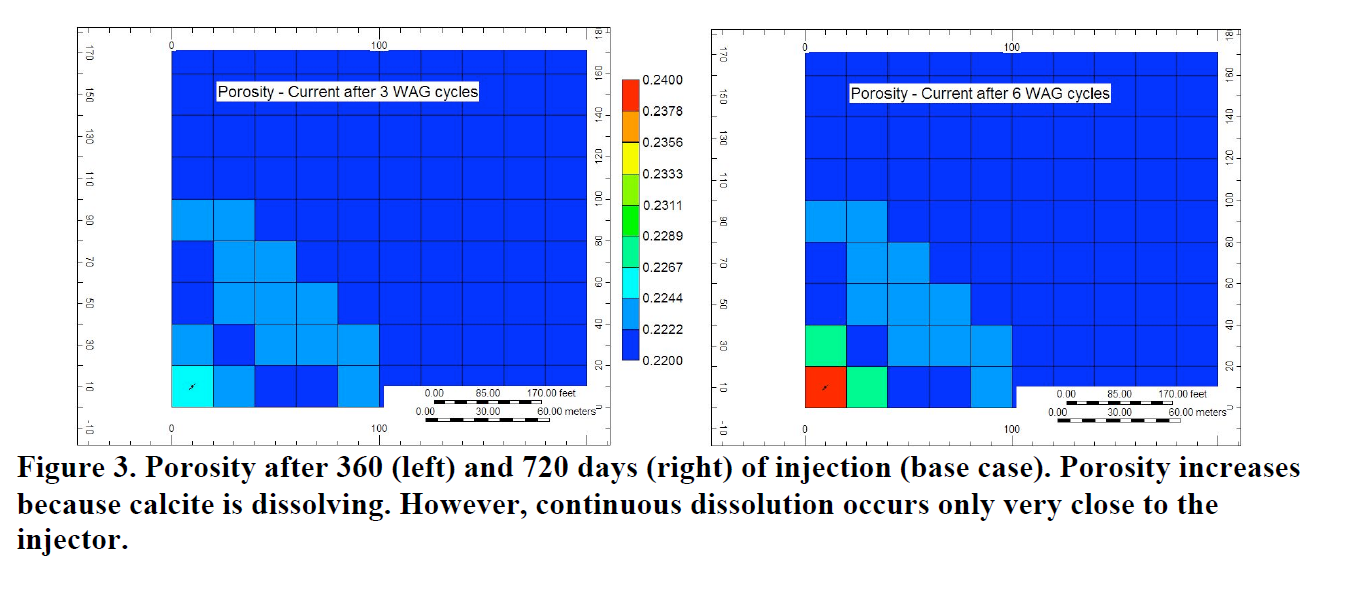Modelling of geochemical reactions during CO2 WAG injection on carbonate reservoirs
本文研究了石灰岩油藏注入CO2水交替气(WAG)过程中方解石的溶解和沉淀。首先,在静态环境中研究方解石和碳酸体系之间的平衡,以了解化学成分、温度和压力的变化如何影响矿物反应。然后,提出了四种CO2溶解度模型(PHREEQC、CMG-GEM、Duan&Sun和Diamond&Akinfiev),并与文献中的实验数据进行了比较。建立了一个将CO2溶解度与矿物和水反应耦合的经验模型。然后,使用PHREEQC和GEM进行反应传输模拟。
用PHREEQC模拟石灰石储层中碳酸水的注入,以评估方解石反应的行为。使用GEM对获得的结果进行了解释,并在类似的模型中进行了观察。在GEM中进行了有关单相注入(海水和纯CO2注入)的额外模拟,其分析用于帮助解释更复杂的CO2 WAG和CO2 SWAG(同时注水和注气)。模拟了不同的WAG段塞尺寸,并确定了WAG比(储层条件下注入水和注入气的体积比)与溶解方解石之间的简单关系。在网格细化过程中评估孔隙度变化和结垢的敏感性。
根据WAG方案,WAG工艺可获得注入井井筒周围的溶解区。随后,在GEM中进行的反应输运模拟扩展到二维三相非等温流动,并进行了重新分析。研究了不同时间步长下热交换对溶解的影响。模拟了更多WAG方案,并获得了WAG方案与溶解之间的关系,类似于一维模拟。
通过添加具有不同属性的层来完成最终模型,以研究层之间连通如何影响反应。溶解区和孔隙度增加是根据地层的流动能力和前缘速度确定的,而更大风险的深度则是通过考虑注入流体的重力分离来确定的。最后,模拟了不同的地质场景、油井作业和初始油藏条件。
In this thesis calcite dissolution and precipitation are investigated during injection of CO2 WAG (water alternating gas) in limestone oil reservoirs. First, the equilibrium between calcite and the carbonic acid system is studied in a static environment to understand how variations in chemical composition, temperature and pressure affect the mineral reactions. Then, four models of CO2 solubility are presented (PHREEQC, CMG GEM, Duan & Sun and Diamond & Akinfiev) and compared against experimental data from the literature. An empirical model that couples the CO2 solubility to the mineral and aqueous reactions is constructed. After that, reactive transport simulations are performed using PHREEQC and GEM.
The injection of carbonated water in a limestone reservoir is simulated with PHREEQC to assess the behavior of calcite reactions. The obtained results are explained and also observed in a similar model using GEM. Additional simulations are performed in GEM concerning single-phase injection (seawater and pure CO2 injections) and their analyses are used to assist in the interpretation of the more complex CO2 WAG and CO2 SWAG (simultaneous water and gas injection). Different WAG slug sizes are simulated and simple relationships between the WAG ratio (volumetric ratio between injected water and injected gas at reservoir conditions) and the dissolved calcite are determined. Sensitivity of the porosity change, and scale deposition is assessed during grid refinement.
A dissolution zone around the injector wellbore is obtained for the WAG process that is dependent on the WAG scheme. Later, reactive transport simulations performed in GEM are extended to 3-phase non-isothermal flow in 2D and re-analysed. The impact of heat exchange on the dissolution is investigated for different time step sizes. More WAG scenarios are simulated and a relationship between the WAG scheme and dissolution similar to 1D simulations is obtained.
The final model is completed by adding layers with different properties to investigate how the communication between layers affects the reactions. The dissolution zone and porosity increase are determined based on the flow capacities and front velocities of the layers, while the depth of more sever scale risks are located by considering also the gravity segregation of injected fluids. Finally, different geological scenarios, well operations and initial reservoir conditions are simulated.




